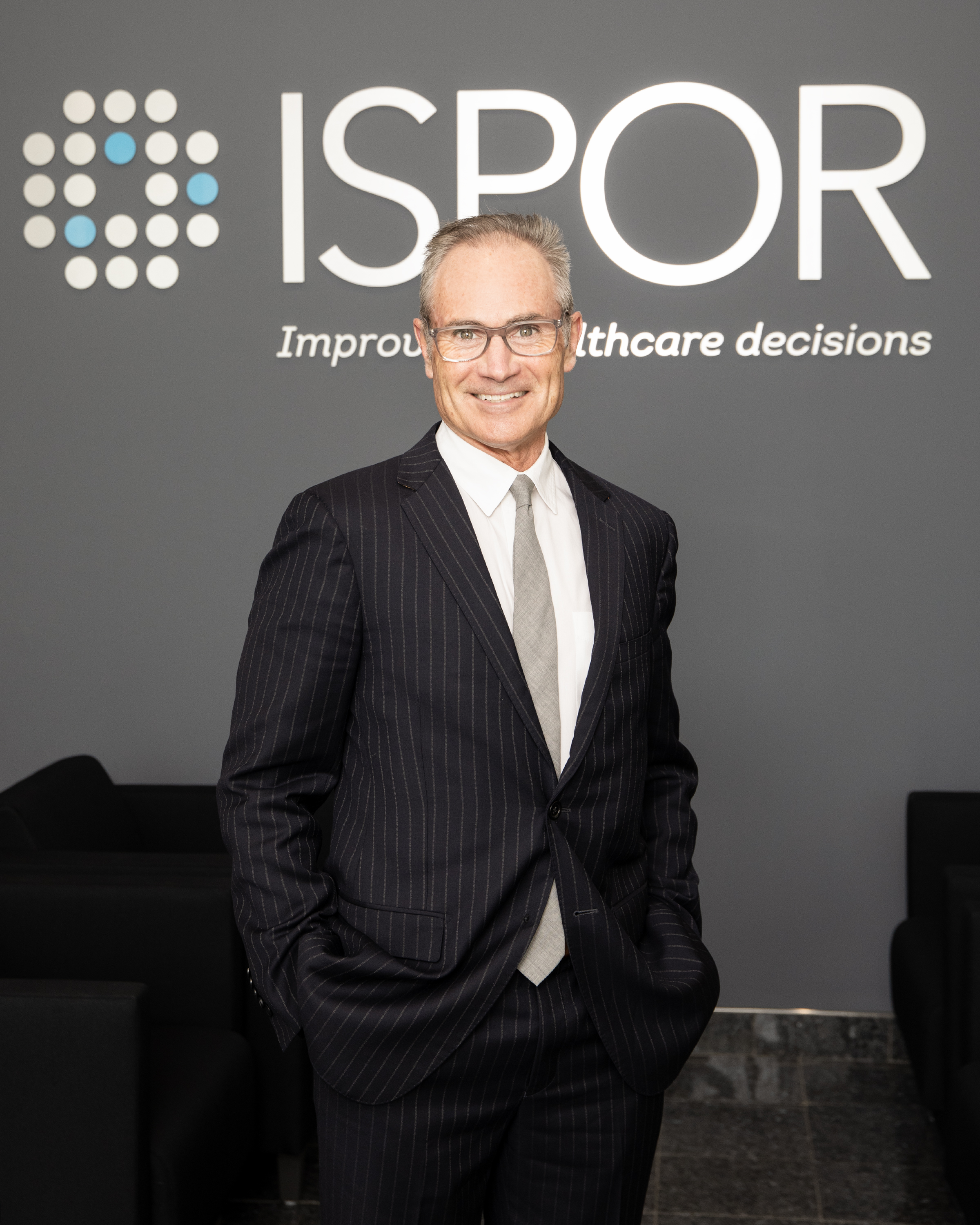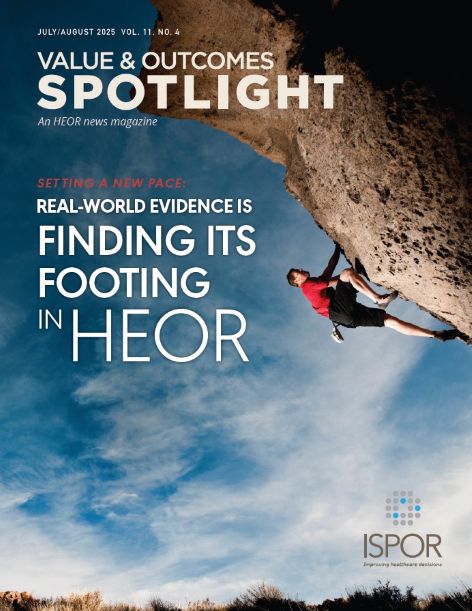Using Real-World Evidence to Improve Healthcare Decision Making
Rob Abbott, CEO & Executive Director, ISPOR
 The randomized controlled trial (RCT) has long been viewed as the “gold standard” for evaluating the efficacy of new drugs or medical products. That said, as good as the RCT might be, it is still just a trial with a sample population and there is something to be said for supplementing the evidence generated through the RCT with what is now popularly known as “real-world evidence” or RWE.
The randomized controlled trial (RCT) has long been viewed as the “gold standard” for evaluating the efficacy of new drugs or medical products. That said, as good as the RCT might be, it is still just a trial with a sample population and there is something to be said for supplementing the evidence generated through the RCT with what is now popularly known as “real-world evidence” or RWE.
RWE is evidence about a drug or medical product’s safety and efficacy that is generated outside of the RCT using real-world data (RWD) from patient experience with the product. In this way, RWD and RWE complement clinical trial data by providing insights from broader, more diverse populations in real-world settings, offering a more complete picture of a product’s effectiveness and safety. Among the questions that RWD and RWE can help to answer are the following:
- Did the drug or product perform as expected?
- Were there side effects, and if so, what was the nature of those effects?
- Based on real-world experience, does the drug or product still merit reimbursement?
To be sure, clinical trials are crucial for controlled evaluation—and they often have limitations in generalizability due to strict inclusion/exclusion criteria and specific study populations. This is where RWD and RWE become important. RWD, whether from patient-reported outcomes, electronic health records claims data, or other sources such as wearables can include a wider range of both patients and outcomes, helping to bridge the gap between controlled research settings and the complexities of real-world clinical practice.
In light of the above, I’m gratified that this issue of Value and Outcomes Spotlight is focusing on the ways in which RWD and RWE are being used by health economics and outcomes researchers around the world to strengthen the evidence base that we collectively use to improve healthcare decision making. As the papers gathered together here make clear, RWD and RWE complement RCTs in many ways:
1. Expanding Generalizability:
- Clinical trials often involve specific patient populations, potentially excluding individuals with comorbidities or those who are not representative of the broader patient population.
- RWD captures data from diverse patient populations and real-world settings, allowing researchers to understand how a treatment performs across a wider spectrum of individuals.
2. Addressing Knowledge Gaps:
- RWD can help fill gaps in knowledge about a drug’s effectiveness or safety in specific patient subgroups or clinical settings not adequately covered in clinical trials.
3. Enhancing Trial Design and Execution:
- RWD can be used to identify potential participants for clinical trials, optimize eligibility criteria, and improve recruitment strategies.
- By analyzing RWD, researchers can better understand the feasibility of a clinical trial, refine study protocols, and potentially accelerate the trial process.
4. Supporting Regulatory Decisions:
- Regulatory bodies like the US Food and Drug Administration in the United States and European Medicines Agency in the European Union are increasingly recognizing the value of RWE in supporting regulatory decisions.
- RWE can provide additional evidence to support drug approvals, postmarket surveillance, and other regulatory actions.
Ultimately, the greatest value of RWD and RWE is in improving healthcare decision making. I passionately believe that if we understand the “real-world” performance of a drug or product, we can better assess its value and make smarter resource allocation decisions—and this applies just as much to healthcare providers as it does payers, patients, and other stakeholders in the healthcare ecosystem. What unites us is our desire to bring the best that medical science has to offer to the greatest number of patients at reasonable cost. RWD and RWE can help all of us to make that dream a reality.
As good as the RCT might be, there is something to be said for supplementing the evidence generated through the RCT with what is now popularly known as “real-world evidence.”
As the CEO of ISPOR, I am so proud of the work our Society has done in the RWD and RWE space. This is especially true with respect to improving standards and practice for the collection and analysis of RWD. ISPOR and the International Society for Pharmacoepidemiology (ISPE) created a task force to make recommendations regarding good procedural practices that would enhance decision makers’ confidence in evidence derived from RWD studies. Peer review by ISPOR/ISPE members and task force participants provided a consensus-building iterative process for the topics and framing of recommendations that address topics such as study registration, replicability, and stakeholder involvement in RWE studies. These recommendations provide a trustworthy foundation for the expanded use of RWE in healthcare decision making.i
In addition to the collaboration with ISPE cited above, I also want to call out the Real-World Evidence Transparency Initiative Partnership, a joint collaboration and ongoing effort between ISPOR, ISPE, the Duke-Margolis Center for Health Policy, and the National Pharmaceutical Council. The objective of this initiative is to establish a culture of transparency for study analysis and reporting of hypotheses evaluating RWE studies on treatment effects.ii An important output of the Transparency Initiative is the Real-World Evidence Registry, a fit-for-purpose platform that enables researchers to register their study designs before they begin work to facilitate the transparency needed to elevate the trust in the study results.
As the volume and diversity of RWD continues to grow exponentially—aided by technology and integrated electronic medical records—I pledge to work with our members and other collaborators to keep expanding our understanding of how RWD can be converted into RWE that, in turn, can be used to improve healthcare decision making and make healthcare more accessible, effective, efficient, and affordable for more people globally.
i See Berger ML, Sox H, Willke RJ, et al. Good practices for real-world data studies of treatment and/or comparative effectiveness: recommendations from the Joint ISPOR-ISPE Special Task Force on Real-World Evidence in Health Care Decision Making. Value Health. 2017;20(8):1003-1008.
ii The Real-World Evidence Transparency Initiative published a plan to encourage routine registration of noninterventional real-world evidence studies used to evaluate treatment effects. The report, “Improving Transparency to Build Trust in Real-World Secondary Data Studies for Hypothesis Testing—Why, What, and How: Recommendations and a Road Map from the Real-World Evidence Transparency Initiative,” was published in the September 2020 issue of Value in Health.

